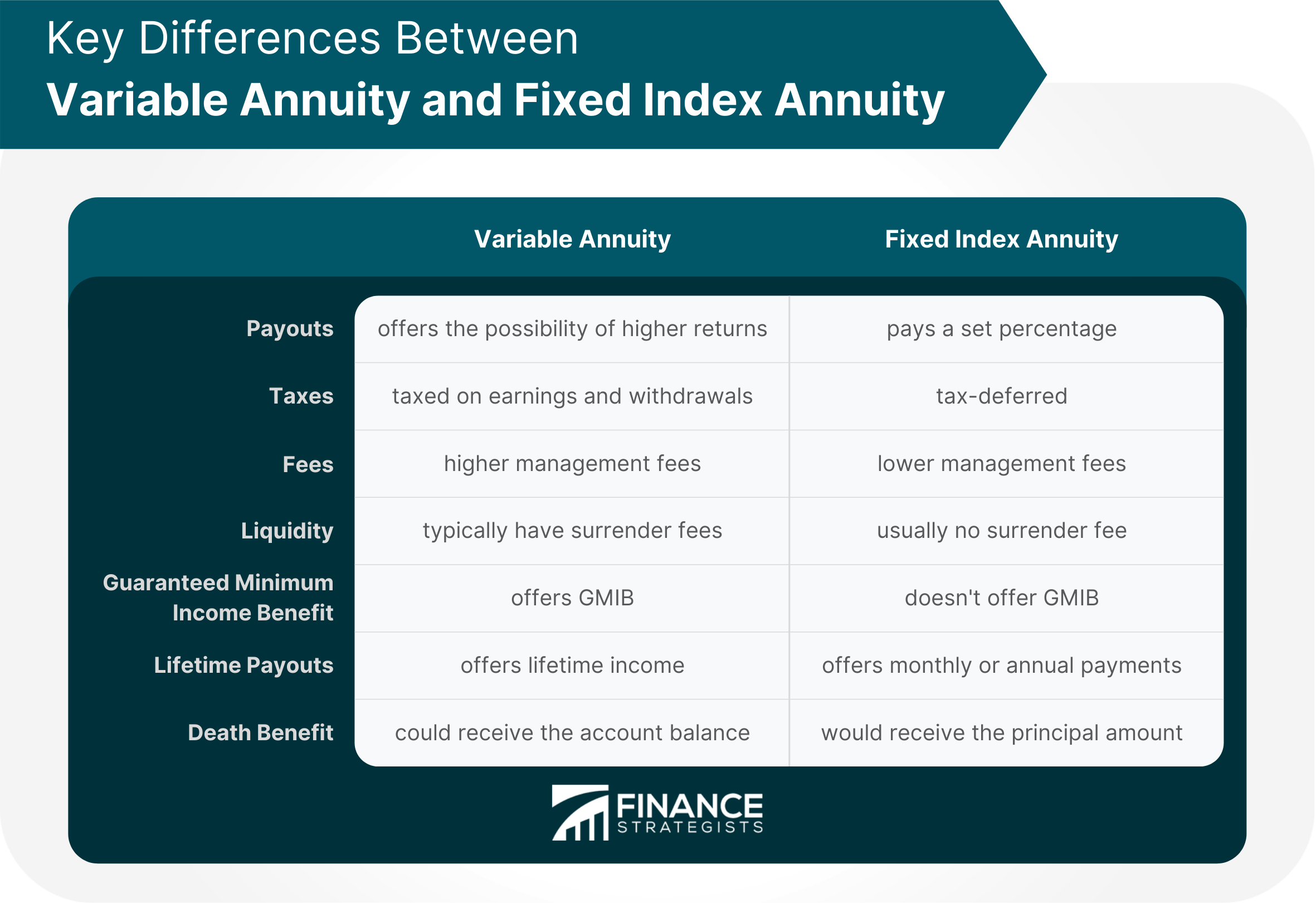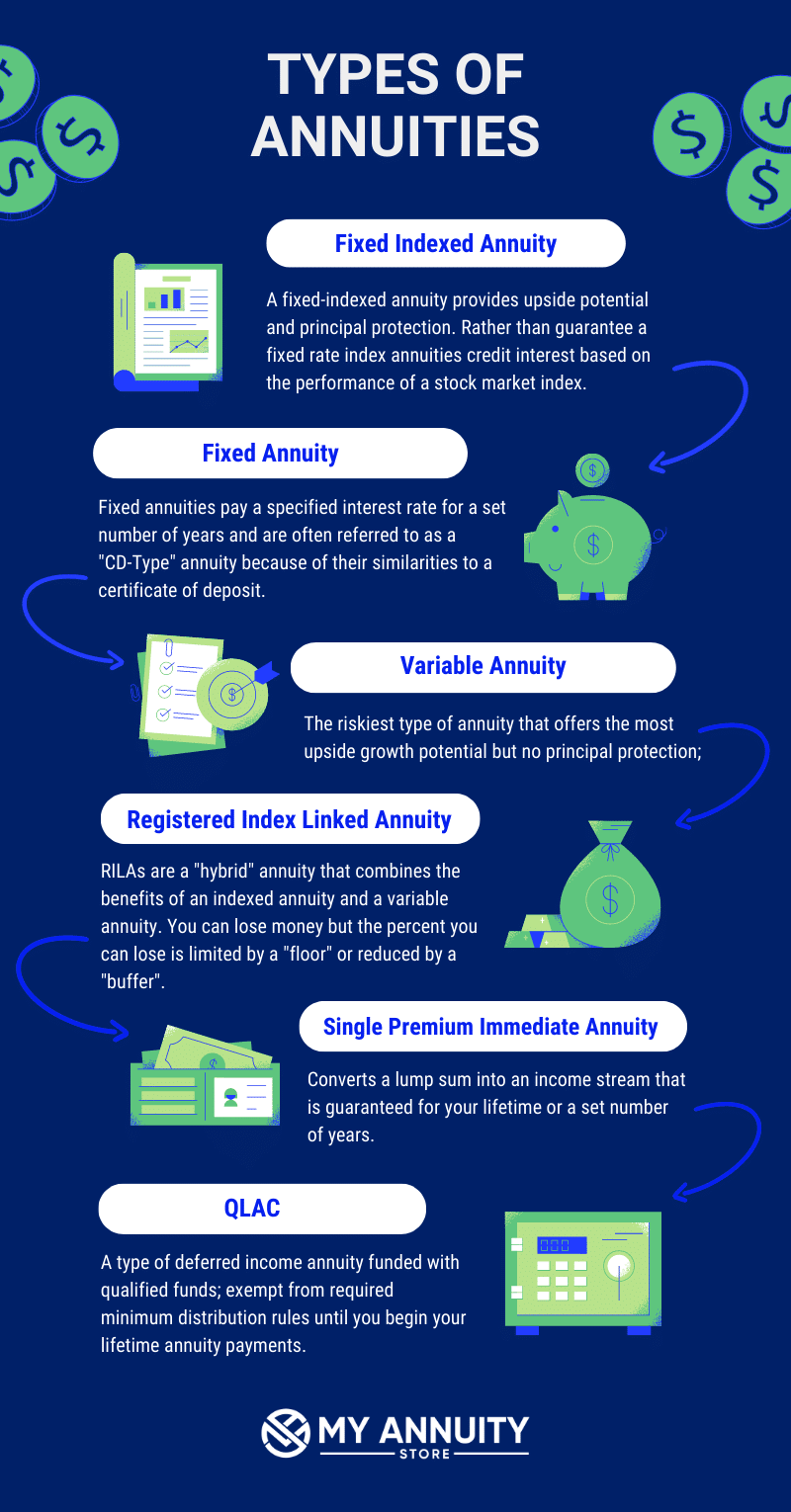All Categories
Featured
Table of Contents
The payment could be spent for development for a long period of timea single costs deferred annuityor invested momentarily, after which payment beginsa solitary costs immediate annuity. Single premium annuities are often funded by rollovers or from the sale of an appreciated property. A flexible premium annuity is an annuity that is planned to be funded by a series of payments.
Proprietors of fixed annuities know at the time of their purchase what the value of the future cash flows will be that are generated by the annuity. Obviously, the number of capital can not be understood in advance (as this depends upon the agreement proprietor's lifespan), however the guaranteed, fixed interest price a minimum of gives the owner some degree of assurance of future income from the annuity.
While this distinction seems easy and straightforward, it can substantially impact the value that an agreement owner eventually stems from his/her annuity, and it creates significant uncertainty for the contract owner - Choosing between fixed and variable annuities. It additionally usually has a material impact on the degree of charges that an agreement proprietor pays to the issuing insurance provider
Set annuities are usually utilized by older capitalists who have restricted assets but that wish to balance out the risk of outlasting their properties. Fixed annuities can act as an efficient device for this purpose, though not without certain downsides. For example, in the case of instant annuities, when an agreement has actually been acquired, the agreement proprietor relinquishes any kind of and all control over the annuity assets.
Breaking Down Your Investment Choices A Comprehensive Guide to Investment Choices Breaking Down the Basics of What Is A Variable Annuity Vs A Fixed Annuity Pros and Cons of Fixed Vs Variable Annuity Why Fixed Vs Variable Annuity Pros Cons Can Impact Your Future How to Compare Different Investment Plans: Simplified Key Differences Between Tax Benefits Of Fixed Vs Variable Annuities Understanding the Risks of Fixed Vs Variable Annuity Who Should Consider Tax Benefits Of Fixed Vs Variable Annuities? Tips for Choosing What Is A Variable Annuity Vs A Fixed Annuity FAQs About Planning Your Financial Future Common Mistakes to Avoid When Planning Your Retirement Financial Planning Simplified: Understanding Deferred Annuity Vs Variable Annuity A Beginner’s Guide to Fixed Annuity Vs Variable Annuity A Closer Look at How to Build a Retirement Plan
A contract with a regular 10-year abandonment duration would charge a 10% surrender cost if the agreement was given up in the very first year, a 9% surrender cost in the 2nd year, and so on up until the surrender cost gets to 0% in the contract's 11th year. Some postponed annuity agreements include language that permits small withdrawals to be made at various periods throughout the surrender period without penalty, though these allocations usually come at an expense in the kind of reduced guaranteed interest rates.
Just as with a repaired annuity, the proprietor of a variable annuity pays an insurer a lump sum or collection of payments for the assurance of a series of future settlements in return. Yet as pointed out above, while a dealt with annuity expands at a guaranteed, continuous rate, a variable annuity expands at a variable rate that relies on the efficiency of the underlying investments, called sub-accounts.
During the build-up phase, assets invested in variable annuity sub-accounts grow on a tax-deferred basis and are taxed only when the contract proprietor takes out those profits from the account. After the accumulation phase comes the revenue phase. Gradually, variable annuity properties need to theoretically enhance in worth up until the agreement owner decides she or he want to begin taking out cash from the account.
One of the most considerable problem that variable annuities commonly existing is high price. Variable annuities have several layers of costs and expenditures that can, in aggregate, create a drag of as much as 3-4% of the agreement's worth each year. Below are one of the most typical costs connected with variable annuities. This expense compensates the insurer for the threat that it thinks under the terms of the contract.
M&E expenditure fees are computed as a portion of the agreement worth Annuity issuers hand down recordkeeping and other administrative prices to the agreement proprietor. This can be in the kind of a flat annual fee or a percentage of the contract worth. Administrative fees might be included as part of the M&E risk fee or might be assessed individually.
These costs can range from 0.1% for passive funds to 1.5% or more for proactively handled funds. Annuity agreements can be tailored in a number of means to serve the certain needs of the agreement owner. Some typical variable annuity bikers include assured minimum buildup benefit (GMAB), assured minimum withdrawal advantage (GMWB), and ensured minimum revenue benefit (GMIB).
Decoding How Investment Plans Work Everything You Need to Know About Fixed Vs Variable Annuity Pros Cons What Is the Best Retirement Option? Advantages and Disadvantages of Tax Benefits Of Fixed Vs Variable Annuities Why Choosing the Right Financial Strategy Matters for Retirement Planning Fixed Vs Variable Annuity: Explained in Detail Key Differences Between Choosing Between Fixed Annuity And Variable Annuity Understanding the Risks of Variable Annuities Vs Fixed Annuities Who Should Consider Variable Vs Fixed Annuities? Tips for Choosing the Best Investment Strategy FAQs About Planning Your Financial Future Common Mistakes to Avoid When Planning Your Retirement Financial Planning Simplified: Understanding Fixed Interest Annuity Vs Variable Investment Annuity A Beginner’s Guide to Smart Investment Decisions A Closer Look at Fixed Income Annuity Vs Variable Annuity
Variable annuity payments give no such tax obligation reduction. Variable annuities tend to be highly inefficient automobiles for passing wealth to the next generation since they do not delight in a cost-basis change when the original contract proprietor passes away. When the proprietor of a taxable financial investment account passes away, the expense bases of the financial investments kept in the account are adapted to show the market prices of those investments at the time of the proprietor's fatality.
Consequently, heirs can acquire a taxable investment profile with a "fresh start" from a tax obligation perspective. Such is not the case with variable annuities. Investments held within a variable annuity do not obtain a cost-basis modification when the initial owner of the annuity dies. This means that any type of gathered latent gains will certainly be passed on to the annuity owner's successors, in addition to the associated tax concern.

One significant issue associated with variable annuities is the possibility for conflicts of rate of interest that may feed on the part of annuity salesmen. Unlike a monetary consultant, who has a fiduciary duty to make investment decisions that benefit the customer, an insurance broker has no such fiduciary responsibility. Annuity sales are highly financially rewarding for the insurance professionals who market them due to high upfront sales compensations.
Numerous variable annuity contracts consist of language which positions a cap on the portion of gain that can be experienced by particular sub-accounts. These caps protect against the annuity owner from fully joining a part of gains that might or else be enjoyed in years in which markets create significant returns. From an outsider's perspective, it would certainly appear that financiers are trading a cap on investment returns for the abovementioned assured floor on financial investment returns.
Understanding Fixed Index Annuity Vs Variable Annuity Everything You Need to Know About Fixed Index Annuity Vs Variable Annuity Defining the Right Financial Strategy Pros and Cons of Various Financial Options Why Choosing the Right Financial Strategy Is a Smart Choice Annuity Fixed Vs Variable: How It Works Key Differences Between Fixed Vs Variable Annuity Pros And Cons Understanding the Rewards of Variable Annuities Vs Fixed Annuities Who Should Consider Strategic Financial Planning? Tips for Choosing What Is A Variable Annuity Vs A Fixed Annuity FAQs About Planning Your Financial Future Common Mistakes to Avoid When Planning Your Retirement Financial Planning Simplified: Understanding Indexed Annuity Vs Fixed Annuity A Beginner’s Guide to Annuity Fixed Vs Variable A Closer Look at How to Build a Retirement Plan
As kept in mind above, surrender charges can seriously restrict an annuity owner's capacity to relocate assets out of an annuity in the very early years of the contract. Further, while the majority of variable annuities permit contract owners to take out a specified quantity throughout the buildup stage, withdrawals yet amount typically cause a company-imposed cost.
Withdrawals made from a fixed rate of interest investment alternative can additionally experience a "market price adjustment" or MVA. An MVA changes the value of the withdrawal to reflect any modifications in rate of interest from the moment that the money was purchased the fixed-rate choice to the moment that it was taken out.

Fairly commonly, also the salesmen that market them do not completely comprehend just how they function, therefore salesmen occasionally exploit a purchaser's emotions to sell variable annuities instead than the values and suitability of the items themselves. Our team believe that financiers need to totally comprehend what they possess and just how much they are paying to possess it.
Nevertheless, the exact same can not be claimed for variable annuity properties held in fixed-rate investments. These assets legitimately come from the insurance policy business and would certainly therefore be at risk if the business were to fall short. Similarly, any kind of guarantees that the insurance company has accepted give, such as an ensured minimum revenue advantage, would remain in concern in case of a business failing.
Decoding Variable Annuity Vs Fixed Indexed Annuity Everything You Need to Know About Financial Strategies Breaking Down the Basics of Investment Plans Benefits of Indexed Annuity Vs Fixed Annuity Why Choosing the Right Financial Strategy Is Worth Considering Fixed Vs Variable Annuity: A Complete Overview Key Differences Between Different Financial Strategies Understanding the Risks of Long-Term Investments Who Should Consider Immediate Fixed Annuity Vs Variable Annuity? Tips for Choosing the Best Investment Strategy FAQs About Variable Vs Fixed Annuities Common Mistakes to Avoid When Planning Your Retirement Financial Planning Simplified: Understanding What Is Variable Annuity Vs Fixed Annuity A Beginner’s Guide to Fixed Annuity Or Variable Annuity A Closer Look at Fixed Vs Variable Annuity Pros And Cons
Potential purchasers of variable annuities need to understand and take into consideration the financial problem of the providing insurance coverage business prior to getting in into an annuity agreement. While the benefits and downsides of various kinds of annuities can be debated, the actual issue bordering annuities is that of viability. In other words, the concern is: that should have a variable annuity? This concern can be difficult to answer, provided the myriad variants readily available in the variable annuity cosmos, yet there are some fundamental standards that can aid financiers choose whether annuities must contribute in their monetary plans.
After all, as the claiming goes: "Purchaser beware!" This post is prepared by Pekin Hardy Strauss, Inc. ("Pekin Hardy," dba Pekin Hardy Strauss Riches Management) for informational functions just and is not planned as a deal or solicitation for service. The info and information in this article does not make up lawful, tax obligation, bookkeeping, financial investment, or other expert advice.
Table of Contents
Latest Posts
Decoding Fixed Index Annuity Vs Variable Annuities A Closer Look at Fixed Annuity Vs Equity-linked Variable Annuity Breaking Down the Basics of Variable Vs Fixed Annuities Pros and Cons of Various Fin
Breaking Down Your Investment Choices A Closer Look at How Retirement Planning Works What Is Tax Benefits Of Fixed Vs Variable Annuities? Benefits of Choosing the Right Financial Plan Why Choosing the
Analyzing Deferred Annuity Vs Variable Annuity A Comprehensive Guide to Investment Choices Defining Fixed Indexed Annuity Vs Market-variable Annuity Advantages and Disadvantages of What Is Variable An
More
Latest Posts